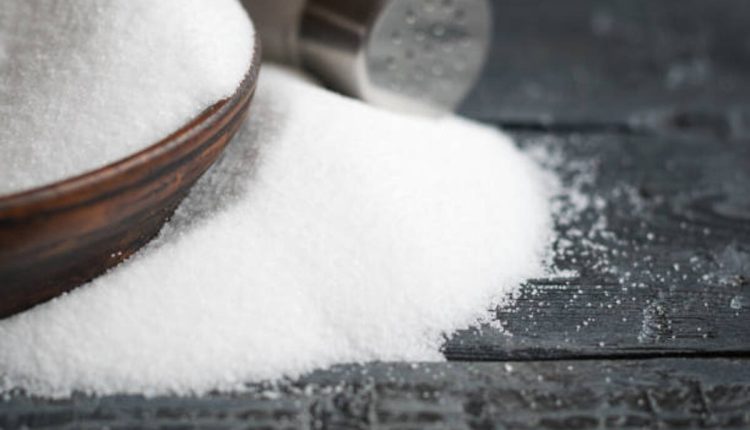Epsom salt, a magnesium-rich alternative to table salt, is often used in baths to soothe sore muscles and joints and for foot soaks and can even be applied directly on wounds or insect bites.
Despite its name, Epsom Salt isn’t sodium but an organic compound of magnesium and sulfur; unlike table salt, it should not be consumed directly.
Benefits
Food grade Epsom Salt is a mineral compound of magnesium and sulfate found throughout your home and garden for health, beauty, plant care, and household cleaning purposes. Epsom salt offers many health and beauty benefits beyond being an effective laxative, such as relieving indigestion, improving muscle health, decreasing cellulite appearance, soothing sore muscles, drawing out splinters, or treating fungal infections.
Epsom salt is often used to bathe sore feet or body aches and pains. Soaking helps soften rough pathways of skin while relieving inflammation caused by arthritis, gout, or fibromyalgia; additionally, it may reduce discomfort caused by swollen ankles and feet.
Magnesium is an essential nutrient in our bodies that plays a critical role in many processes, from controlling blood sugar levels and building protein and bone to creating DNA and helping the heart work effectively without blood clots forming to treating swollen legs or feet, insect bites or minor scrapes and bruises with reduced inflammation.
Many savvy gardeners use Epsom salt as a natural, chemical-free solution to toxic weed killers. Epsom salt can also be combined with a carrier oil and stored by the sink for use as hand wash, while it can also be sprinkled onto houseplants to help them absorb more of their primary nutrients, such as nitrogen, phosphorus, and potassium that might otherwise be hard for them to take in.
Precautions
Named for the town in England where it was first mined, food-grade Epsom salt consists of a naturally occurring mixture of magnesium and sulfate compounds. Used as a bath salt to soothe sore muscles and feet, scrub to exfoliate the skin, or hair wash to add volume, and applied directly on bruises, sprains, or insect bites, it may provide instantaneous relief from pain.
Epsom salts can be found easily in drugstores near aspirin and laxatives. Natural foods stores and some grocery stores stock them too in their salt aisle, with large boxes costing only a few dollars each. They differ from Dead Sea salts, which offer similar health benefits but cost more. They’re also different than fancy bath crystals, which often contain oils, perfumes, or chemicals that could irritate skin conditions.
Epsom salt can act as a laxative when mixed with water and taken internally to relieve constipation and encourage detoxification of the body. However, pregnant women and those suffering from kidney or heart diseases should refrain from this method of using Epsom salt; children under 12 should also not ingest it, as swallowing it could prove deadly.
Dr. Loretta Pratt is a dual board-certified internal medicine and dermatology physician. Recommends pure unscented Epsom Salt as the optimal way to soak for bathing. Ingestion should not occur by those with open wounds or infectious skin conditions such as shingles.
Directions
Epsom salt is a naturally occurring mineral compound composed of magnesium and sulfur that has long been used as a home remedy to support our bodies in various ways, from relieving stress to soothing sore muscles, extracting splinters, and relieving itching from poison ivy. Epsom salt baths may be added into bathwater to replenish magnesium levels within our bodies, soothe skin rashes, help reduce insomnia, ease muscle cramps or fatigue, and replenish magnesium reserves within bathwater tanks.
Honey can also be applied topically to bug bites, soothe skin irritants, and reduce swelling. Furthermore, honey is a natural deodorizer, gentle skin cleanser, and garden fertilizer; in terms of food use, it can be sprinkled over salads or combined with other salts in homemade salt scrub recipes.
Remember when purchasing Epsom salt: not all products are equal. Food-grade Epsom salt produced in factories may become contaminated through machinery or human handling, while non-food-grade Epsom salt grown for gardening or car washing isn’t made under similar conditions and could contain contaminants. Food-grade Epsom salt will bear a label denoting its USP (United States Pharmacopeia) stamp indicating this status.
Ingredients
Soaking in a warm bath filled with Epsom Salts is an enjoyable way to end the day, reduce stress, soothe skin issues, and alleviate aches. Epsom salts contain magnesium sulfate, easily absorbed through skin absorption for health benefits, including muscle and nerve function improvement, preventing arterial hardening, and flushing out toxins from your system.
Epsom salt has many domestic and garden uses beyond beauty treatments and household necessities, particularly its use as an aid to soil water retention and increasing nutrient uptake to foster healthier growth and more vibrant plant life.
Food-grade Epsom Salt can be purchased online and from grocery and drug stores, serving as a natural remedy with numerous purported advantages such as relieving pain, soothing muscles, relieving stress, reducing inflammation, promoting healing, and improving sleep. Although claims related to improving exercise performance or preventing hangovers have yet to be proven, magnesium present in Epsom Salt does help with muscle relaxation and circulation improvements.
Make sure the Epsom salt you purchase is labeled United States Pharmaceutical Grade for optimal quality control, as this ensures high production standards. Other brands sold as technical grade may come from Asia, where manufacturing processes may be less regulated. Avoid taking too many magnesium supplements at once as this could cause heart issues and alter mental status; take only those prescribed by your physician or listed on their package.



Comments are closed.